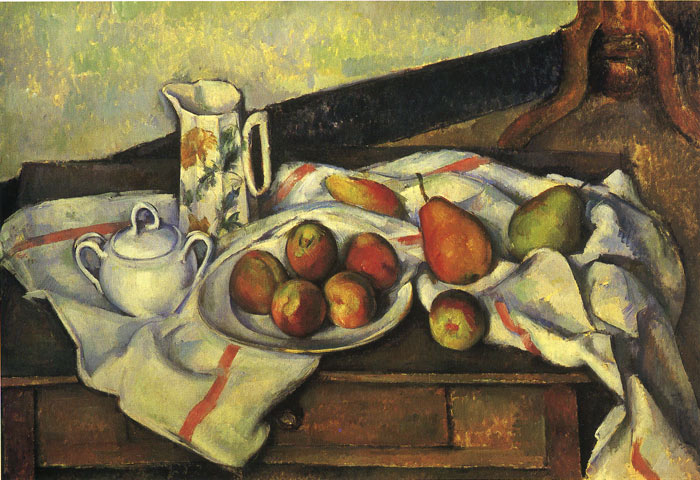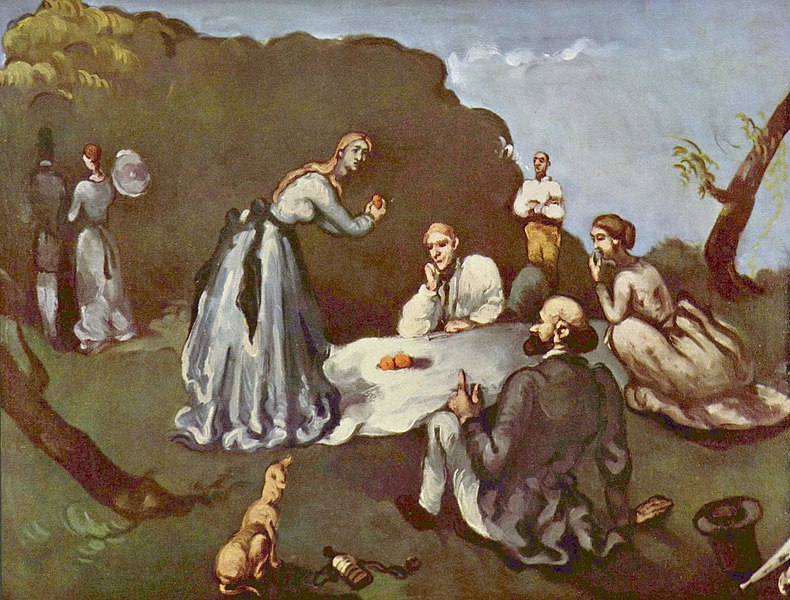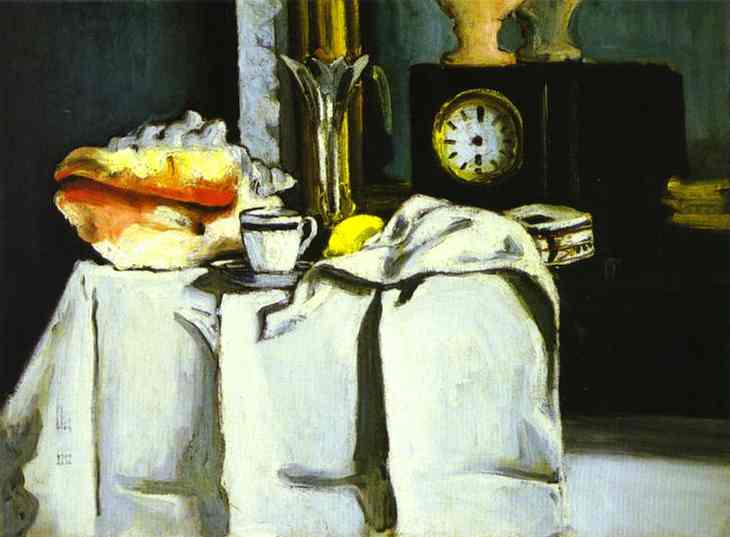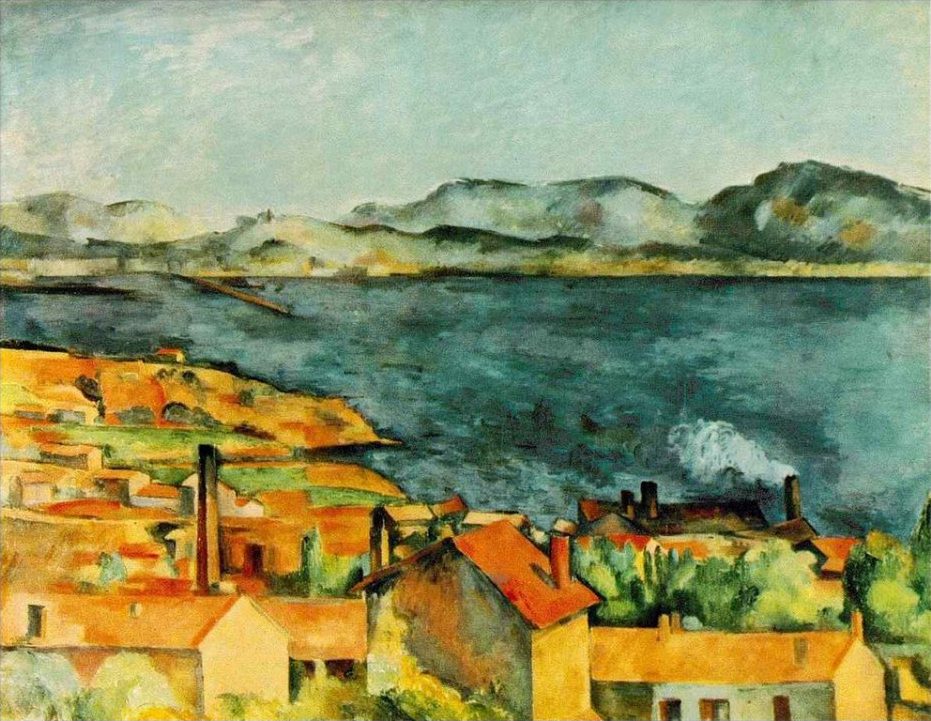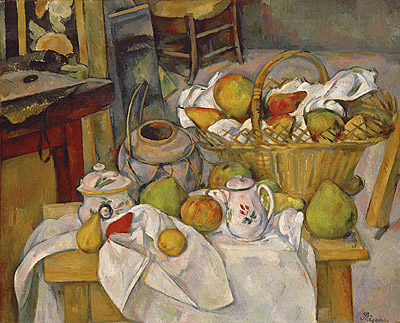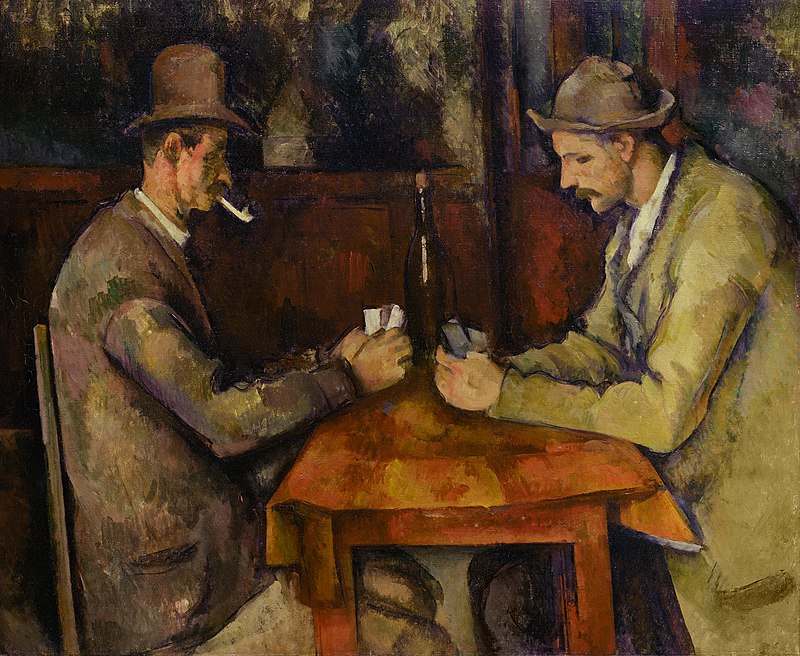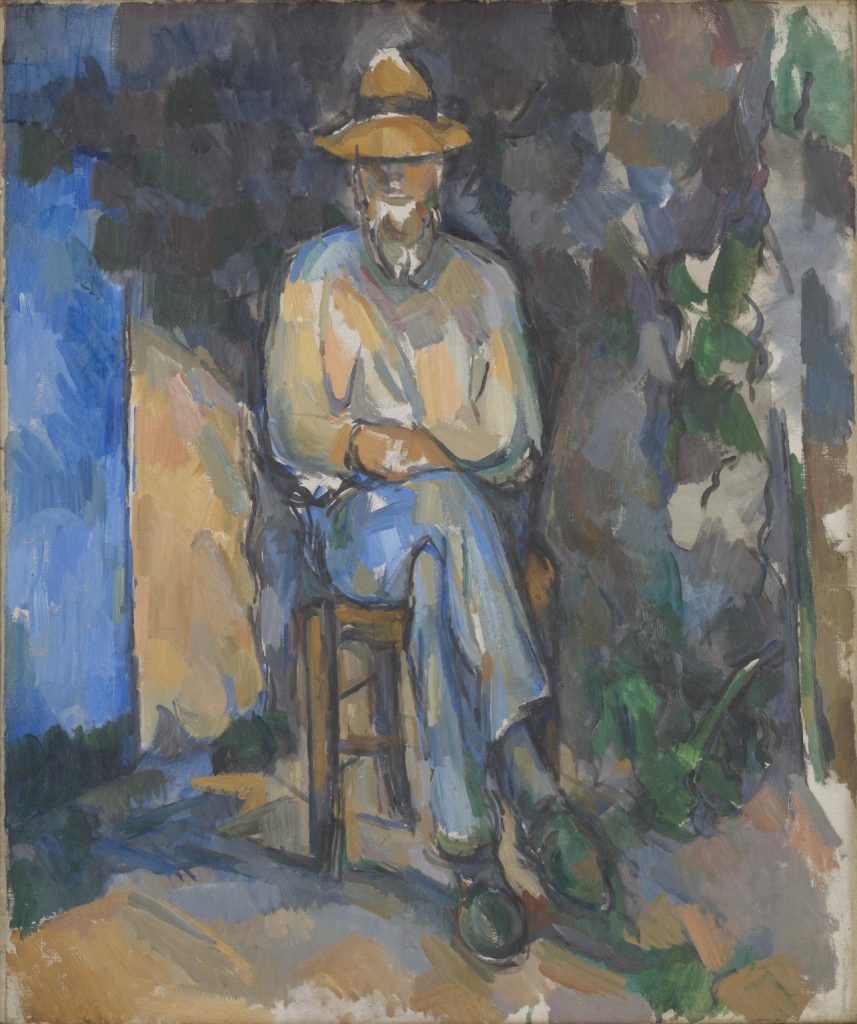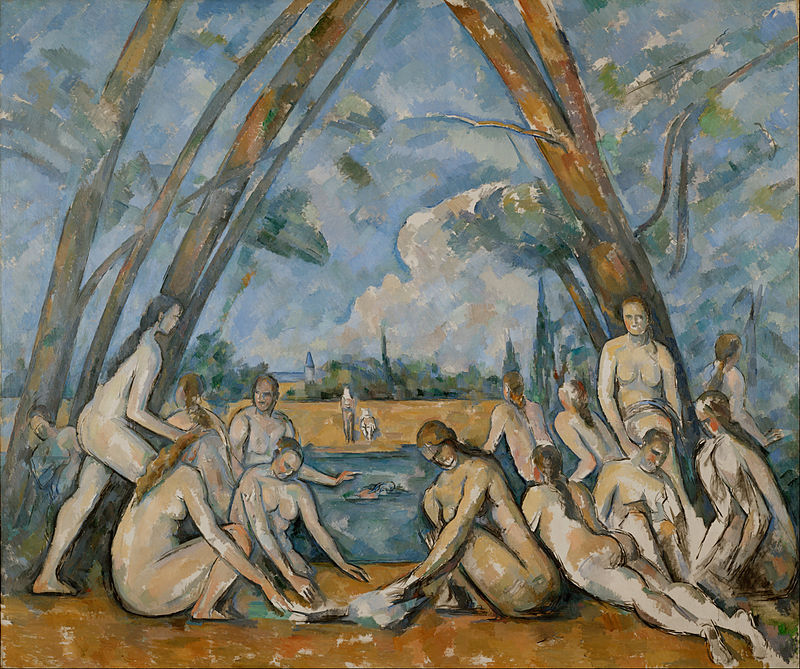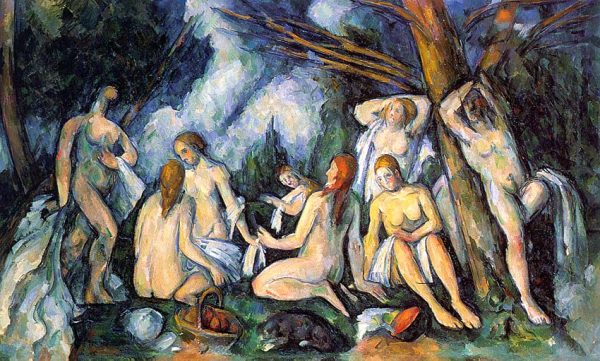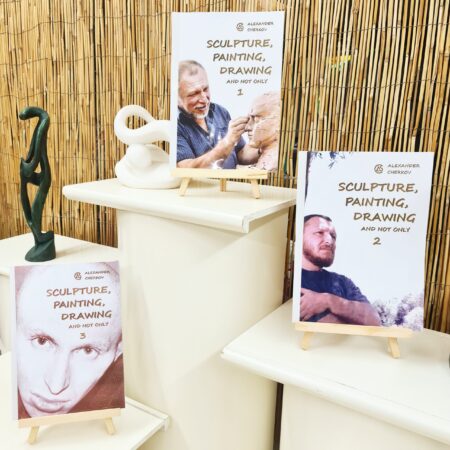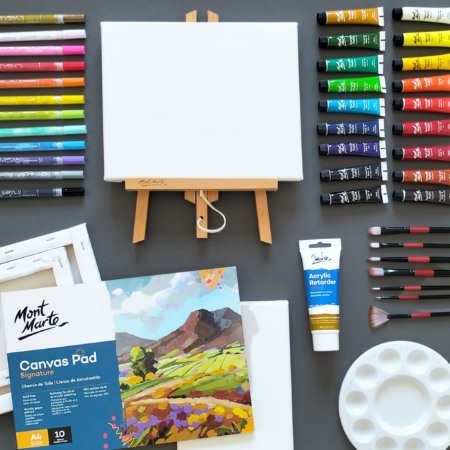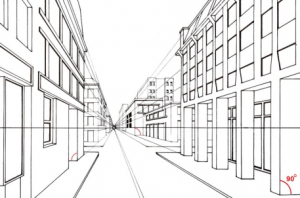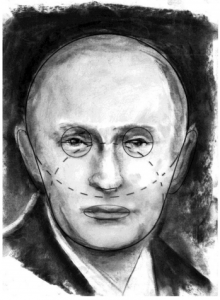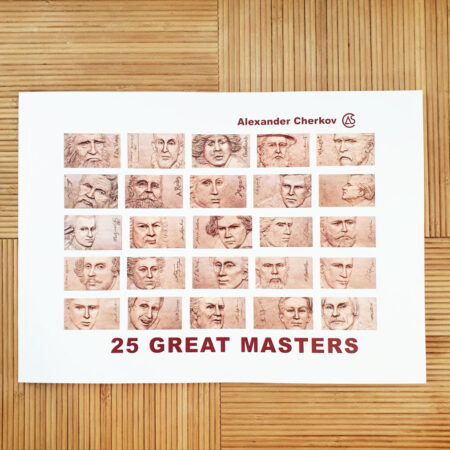The artist Paul Cézanne (1839-1906), a French painter, is considered one of the greatest artists The Post-Impressionists. Cezanne's artistic style greatly influenced the development of art in the 20th century, especially the Cubist movement.
After the death of the artist Paul Cézanne, a very large exhibition of his works was held in Paris. And Cézanne's class for young artists in Paris and others is very important. Cézanne was born in the south of France, not far from Marseille. He moved to Paris and participated in the first Impressionist exhibition. His paintings are not accepted in the living room so he returned to the south. He lives and paints in his hometown in the south so it is clear that he does not deal with the city like Mona, does not deal with opera, theater. His occupation is focused on vision - how we see. How the appearance of the world changes before our eyes when we look, observe. He builds his paintings very carefully. Cezanne is not a simple person, a complex and complicated person but we will not talk about it.
Something very unclear is happening here. A meal on the grass like at Mana's. But this bunch was either stingy or poor- 3 apples for so many people. Not only that, the painting is very dark and the whole occurrence is unclear. With our backs to us it's Cezanne, the hat on the side. He points the finger - for what? Dog? The big woman? This woman is very large relative to the other characters. She's really huge. The man sitting with his hand on his chin and next to him another man who looks like he is doing a ceremony. Cezanne is dressed in a 19th century uniform and he leaves the place with the huge woman. Cezanne himself said the drawing begins where the words end. Each of us can invent a story. Then what everyone will tell, and the story is different each time. We have no way of discussing this, these are hypotheses. Which, of course, made the video an overnight sensation. Cezanne builds the painting carefully. The huge submissive woman - the tree is parallel to her. The orange dog in a straight line with his master of ceremonies orange pants. The apples and the dog in a straight line. Cezanne connects the first plane to the second and third. Even in smaller details Cezanne is meticulous. The line of the hem of the dress is repeated in the clouds. As we said in Mana - the true rational reflection does not matter, he builds a painting. The same is true of Cezanne and more powerfully. Another painting is the black clock.
The clock has no hands and a huge oyster glass vase lemon and table. The shapes repeat. Yellow returns. The humpbacks return at the end of the vase, the pillar and the edge of the map.
As we go from left to right (all Western painting is read from left to right as one writes and reads in European languages). Also the horizontal line of the multiples. We see that Cezanne is thus painting both inanimate and people in the landscape. Also self-portrait:
Prepare very close to it. He's holding the brace. He's probably holding a brush. Cezanne's coat is full of stains. His face is patches of color. Here to a greater extent Cezanne connects the first plane to the last plane through the recurring color spots. When the colors resonate between the planes the eye is directed between the planes the eye remembers and connects. Besides, even in this case Cezanne builds the painting very carefully, in the smallest details - the curve of the braces repeats the curve of the beard. The end of the brace continues in a straight line up the sleeve. The diagonal line of the fabric repeats the diagonal line of the pedestal. All the lines and spots in the painting are repeated.
Aztec- Today it is part of Marseille. It used to be a village. Especially when we compare to a painting by Claude Lorraine.
The horizon in Lorraine's painting is low. If we divide Claude Lorraine's painting into 3 parts. Cezanne's sky is less than a third. Claude Lorraine has a greater sense of depth and expanse. If an artist wants a deep extension he will apply the low horizon.
Aside from the fact that Claude Lorraine's low horizon has a sense of deep scenery we are gradually entering it. The rhythm of light and shadow. The farther away the paintings are bright and everything seems to be shrouded in smoke. Other than that, the river-bend puts us inside. It was customary to make a deep view or really a river curve or a curving path.
For Cezanne, the color of the mountains is strong. The intensity of the color of the mountains is like the intensity of the orange in the first plane and the blue in the second plane. Our distinction is not interrupted, the human eye sequentially connects the movements and colors. Cezanne draws like a meter and fishes the vision - how the eye perceives. And his intention is not to give a fixed, static image. The eye connects between the first plane and the second plane to the third plane with the patches of color returning but not only that - the eye also connects. The pier, the smoke .. We connect the first plain and the far pier. Now it is better to understand that the painter tells us that this is a painting on canvas - this is not a reflection of reality. The fabric is flat. Repeat the flatness of the substrate - in this case the fabric.
Claude's painting is a landscape painting, but is not called a landscape painting but "The Rest on the Way to Egypt" based on stories from the life of Jesus, when he was born he was known to be born, the ruler knew about him and ordered to kill the babies, Jesus' family flees him to Egypt. In the 17th century there is no other painting just he must paint in the landscape some figures or scriptures or mythology. Small characters but impossible without them. In terms of form, Cezanne's painting "The Bay of Aztec" is very different from Claude Lorraine, different on the horizon, other than that the similarity is with Claude in the tall tree on the left and less on the right, in the middle of the entrance to the painting. At Cezanne on the left the continent goes higher and on the left lower. Otherwise it would not have aroused interest, there should have been some difference. Cezanne also allows to enter the landscape through the chimney with the smoke in a straight line. To connect the middle plane to the last he passes the line from the pier. Another difference with Claude the colors are gradual, become vague as far away from our eyes, in the first plane strong blue and last can not be seen colors, no strong color, because the convention that the farther away we are less noticeable in his color but in Cezanne in the last plane in the mountains equal horizon of colors In the first plain, the green mountains at the top of the mountain are identical in intensity to the color of the trees (even stronger), the mountains not uniform in color, made of brush strokes of varying colors (blue, green and orange) similar to the houses and trees in the first plain.
The painter tells us it is a painting on canvas but it is not a reflection of reality. The top is relatively flat, repeating the flatness of the substrate (fabric).
Historical changes in the worldview of this period. Artists (like Cezanne) do not necessarily read science, artist one of the people who cause change as a scientist or writer.
Three modes of expression, words, numbers and shapes (drawing). The artist talks about the world, letting us understand our place in the world. He himself translates his vision into forms. The Empressionists talk about the changes in the city, about consumption, classes, about the influence of light, movement and all this through form.
To see art one must learn to see it, to notice what is happening and how it communicates historical processes (history of ideas, of science).
Another comparison between Cezanne (Aztec) and Jacob. In Jacob's "Mirror of Harlem" (a neighborhood in Manhattan) the horizon is about two-thirds the sky low, it gives a feeling of space, it alternates between shadow and light so that the eye enters slowly. Cezanne also makes an alternation of light and shadow but to a reduced extent. The teacher said that in the 17th century there is no landscape that is just a landscape but there is a difference between Catholic countries like France Italy Spain where there is no landscape without text. Not so in Dutch painting, the Dutch stop being Catholic, so does England.
The artist Paul Cézanne paints a lot of still life, he says he left Paris and returned to his hometown in the south of France because he was not interested in painting fast, capturing the moment, the changes in textures and colors influenced by light. He wants to build the painting as it was on a meal on the grass, the black clock. Draw in detail, control the drawing, draw slowly. In a still life as opposed to a landscape painting, it is in his room, does not change all the time, he can pay attention to every detail, it interests him.
In the 17th century they painted a lot of still lifes and landscapes. Since they were buying for small paintings, still life paintings often also carried meaning, they dealt with the sin of pride, one of the seven main sins, reminding a person that he should not be proud, his days are always numbered, we are all dead, there is no one who is not.
A half-peeled lemon is a texture, the bun, the glass that is half full, many times these paintings had hourglasses (time passes) or smoke rising and disappearing, the Dutch paintings as if unclean, were not just wanting to teach morality, to tell a person that his life is short and he should pay attention He lives because he has to fear God. Apart from that, Cezanne has no such thing, his paintings do not preach this morality, it is simply silent. But we know to look and see that in Peter the brush strokes are short, different textures, the beautiful glass of wine, still with cancer in the plate, there is no doubt that the glass is glass, a metal plate. In Cezanne, on the other hand, we understand that it is a wooden table, and we imagine that white is a porcelain plate and so is the milk jug, but there is not the same distinction in texture. The table looks broken, the right side and the left side do not continue in the same line, on a slope compared to Peter where the line of the table is straight. With Cezanne if this were the reality the fruits would fall off the table. In the exact perspective drawing when he draws the glass, the top of the glass is not visible in the painting, becoming narrower compared to Cezanne's milk jug. The glass has a reflection of light. With Cezanne you see the last end high, you can look into the urn. With Peter and other artists in the Netherlands in the 17th century and also in the 18th century they are faithful to the convention that the painter paints what is seen before his eyes, conveyed what he saw alone. The convention of drawing from the front, not from the side, does not change this point of view. Everything from the same distance you stand and look, everything is uniform. We have already seen that Degas changes this convention, drawing from above from the side. Cezanne is also unfaithful to this, he paints some of the objects from the front and then he changes his point of view and looks down, to see the inside of the urn. Peter's plate also looks elliptical, not round like Cézanne's. At Cezanne the board of the table rises and meets in the chair of the three legs.
Compare another painting by Cezanne (Still with Apples) and Survivor. In Chardin again a table in a straight line, it ends on the right side, on the table a cup, he has an extraordinary ability to paint the different textures, the peel of the peach looks like alive, a bowl with strawberries when the strawberries are arranged in a pyramidal shape really equal sides. For Cezanne the table looks broken, more clearly in the previous drawing, the lines of the table are not in the same line. Differences in height, see the inside of the basket, it changes the points of view.
A fundamental change of principle in human thought, in answer to the question what do we see? How do we see? How do we know the world? In the 17th century until the second half of the 18th century the perception was that man was born and God gave him, graced him with most of his grace in fixed concepts in the head, a kind of image, this is how man is created when he knows what a cube is, a pyramid.
Text on worldview, Descartes, dialysis:
One of the most important philosophers and scientists in scientific thought was 17th century Rene Descartes, he says that the sensory perception or action we perceive is not vision, the diagnosis is in the brain, it is not what we see, for Descartes the object sends some impulses in passing from air to eye, but also Know that lighting is different, different angles change the appearance of the object, if I see a cube from the front it is different from the appearance of the side, the vision is misleading. Our diagnosis is in the brain, which always means it is always the same shape. He says I will close my eyes I will close my ears, ignore the senses, the knowledge of the world is the knowledge I have in mind, this direction in European and Eastern thought among the Arabs, rationalism, our concepts and our knowledge do not depend on sensory experience what we see is distortion.
Even in dialysis in Western philosophy, it is a mental intuition not the senses. Determined the perception of what painting is, it changes, our knowledge of the world with the new modern perception, the knowledge is not permanent, the attention and emphasis shifts to the sensory experience, to the physiological eye of man. Man builds and shapes what he sees in the world by combining prior knowledge and actual experience. When a human baby is born let him play dice, ball, pyramid, roll, he starts to feel, so he has early knowledge and plus what we actually see, there is no fixed image in his head that changes, it is constantly changing, what exists in the new perception is the changing image. Every distinction is a combination of prior knowledge and the knowledge of that moment. There is no fixed form that is painted, Cezanne draws the change, the new look every moment. For Cezanne the apples he paints over and over again are not pre-prepared from the brain idea, every apple is a re-creation. In Cezanne every time the object is re-created according to the light that falls on it, it creates the apple it is not given in advance. Cézanne wants to paint like Afahad did not paint before him, he writes in a letter that he wants to surprise Paris with the apple, to paint an apple and they saw that it was a painting of an apple. Mana also wants us to notice that this is a painting. There are apples with contours some without, each in a slightly different color. Cezanne draws the new relation to the data of the senses (vision).
The artist Paul Cézanne paints from different points of view, the basket we see both from the front and from above. Also the urn, both from the front and from above. The table is obviously broken. When he moves the point of view changes and then a distortion emerges. The lines do not drain to the same point.
Another comparison between Cezanne and Chardin. 18th-century Chardin, he still believed we were born by the grace of God, with innate images and the senses only interfering. Cezanne says that the world is what I see, there is no other world, the only world is the one I see, and what I see changes all the time.
Two more pictures of Cezanne, still (apples), the glass meets the wall, the table is broken, the bowl both from the front and from above, see the bottom of the bowl.
Two more examples, in his later paintings, at the end of the century the paintings are very rich.
Cezanne also paints a portrait of a man. We have already seen his self-portrait.
Late 19th century Compared to Chardin's painting, one notices a movement, a smooth brush movement. With Cezanne everything is spots, he builds the painting, he shapes the world he sees, with every look, every movement everything changes, and within this change he builds the painting to the last detail.
In Cezanne, the person is in a straight line with the chair, the hat is high and straight and he is sitting against a wall that probably has some form on it, stains of color. The other man is leaning to the side, not sitting upright, his hat is flattened and he is sitting against straight lines, Cezanne wants to give interest to balance against both sides. Another man in straight lines against an unclear background compared to the man on the right, meticulousness, not quick drawing, he wants to look at each line. The edges of the map, on the left side the edge of the map has a straight line in the man on the right side the edge of the map is different, not a straight line.
Cezanne also paints a landscape, he paints in the same way he paints inanimate. The motif is not important. It is not the subject that matters but how he paints. Cezanne has dozens of paintings of the same mountain. "Mount Saint Victor" - the Mount of Beatitudes. In 1882, the colors in the distance are of the same intensity as the front colors. True to the tradition of painting, Cezanne uses all the tricks, light and shadow alternately for a sense of depth. There is a path in the painting, a row of houses, the fields, the mountains. To differentiate between the paintings their location is different.
In 1906 Cezanne died, these are his last paintings between 1902 and his death. There is a high element compared to a lower element, the colors that recur the same intensity in both paintings more than before. The colors in the last and first plane, the blue, the green, the orange, the white are repeated. The eye keeps and remembers, there is a sequence of sight. When he repeats the eye colors from France, the painting looks flatter. Using passages in the manner of painting the wood that is swallowed and merged, there are no contours, it is smooth, it is not clear where the tree begins and where the mountain ends. You can see in the paintings that it is the same place but slightly different, what is this tree.
When scientists study the eyeball, how the eye works then notice new things, that the vision in the center of the eye is different, it is sharper than at the tip of the eye. We do not see the same thing, I look ahead, the central point I see a clear picture and the rest of the world view in the wider field of vision is more blurred. When I look a lot of time to the same place where the look will be sharpened it becomes blurred.
The character versus background, which turns out that the distinction between character and background is not fixed, there is no character in a fixed background, when I look for a long time or turn my gaze, what is a character and what is a changing moment. This is what Cezanne says in his paintings as the scientists said about the eye.
Cézanne's "The Gardener" as opposed to Piero della Paracasca from the 15th century, has a character and background in both. In Francesca the figure (the prince) in strong colors, a strong red stands out, behind him the background differs from him, the land he controls. For Cezanne, the character is partially absorbed in the background, the distinction between the character and the background is not sharp, the border of the shoe is not clear, the wall rises above his shoulder. The distinction between character and background is not fixed and may change. It was seen until 1960
Cézanne's "Portrait of the Gardener", a full portrait, is seen throughout, if compared to a 15th century painting to a painting by Pierre, he paints the Count very conspicuously with his red garment conspicuous against the background. On the first level it is darker and on the last level it looks like clouds but it is a mountain. While with Cézanne there are more places where the character fits into the background, Valia's shoe, where does his shoe end? Where do his shoulders end? The shoulders look like a surface, part of the background. A combination of the character in the background. According to our new understanding of the way a person sees, that it is a vision of a process, there is no image in the mind ready, a kind of gift from God, as we grow we connect what we see to the image in the head, but the real thing is the image in the head, in the idea. The objects we see are actually distortion, we do not always notice well, in different lighting the object changes, in different visibility the object changes. Until now the understanding was that the object is separate from the person, from the observer and the painter paints the object in its entirety as it is in the image in the brain. But if the person's physiological eye, there is no distinction between the character and the background, the more you look the distinction does not exist, the character can show as a background, there is no world other than the one we see, we shape our world based on knowledge and sensory experience.
Cézanne's painting, figures in the landscape like the meal on the grass, no proportion, no logical proportions, the woman looks like a giant with a huge back, the standing woman also looks big she looks part of the tree, really touches the trunk of the tree, not clear where the figures end, The women's heads look like tulips. Trees have no clear boundaries, the woman sitting with her back to the ground is not clear where, this figure will return to other painters studying with Cezanne.
Cezanne arranges the painting in the shape of a pyramid, it has a deep view, the huge woman is engulfed in the background, her boundaries are not clear, the painting is not ideally finished, she has no hands. What is the content of the painting?
We have seen in earlier paintings by Claude Lorraine "The Rest in Escape from Egypt", and in Chardin "The Cup and the Bowl" the perfect textures and shapes, the painting by Claude was painted as if it were a bit abstract, abstract thought, as if the canvas did not exist, because the painting is a window to reality Or each of us when he sees this landscape he is as if standing at a window and looking at the landscape, he is looking at a landscape whose details are fixed, they are from the mind. All bodies, we are born with these images, when we grow up we identify in reality but first of all they are in the mind, painting is a representation of the world as we know it, it is like a window to the world. The painting is a representation, a representation. What the painter does until the 19th century is he makes a representation of the world as it exists, so the painting is a window into reality, the canvas supposedly does not exist, we see in depth.
For Nicola Posen, he paints the "holy family", the pictures are clear, strong colors, and behind them the landscape with the buildings and there is a kind of window here, everything is so realistic. With Cezanne much flatter, there is no deep entrance to the landscape, the clouds - whatever will be sealing, parallel alone, prevents us from the hole, the feeling, the perception that we stand at the window and look at the landscape because it seals it. The content of Cezanne's paintings is our new attitude to what we see, we are active in the world, vision is a process, for Posen it is as if a predetermined background. In Cezanne our confession to the world, when he moves or looks for a long time the world changes. There is nothing fixed and it depends on our body, whether we move or not move, how long we look that if for a long time it seems more blurred, we do not have a picture in mind, we learn the world. Our pleasure is intensified when we know what we are seeing, after the first touch of admiration and excitement.
Cezanne's "Trail in the Forest" versus Claude's painting "The Sailing of the Queen of Sheba" (story), Claude is a painter of a landscape but a landscape is in a low hierarchy, he adds images that will be based on pre-existing text and familiar to the public, scriptures, mythology. This is a so-called deep landscape we stand the painter in an open window, air that can be passed through and look at this happening. The difference to Cézanne's painting, the path suddenly ends, all the trees fill the top, these are not houses, it's not clear what it is, it's closed. Cezanne supposedly repeats the canvas, the canvas is found, it's not a window, it's opaque and that's what we've already said about Mana's paintings, the edges are closed, it's building a picture, so even a counter can paint the cathedral 20 times and Cezanne the mountain over and over again. It's a picture and it makes it clear to us that it's a painting on canvas, on a substrate. Compared to Claude who seems to have no fabric. A dish highlighted the fabric, in Olympia it is brown and in the middle of a stripe, on the balcony repeating the green lines of the shutters and railing. What Cezanne paints is the new place of man in the world, no more someone standing still without looking and looking out the window and the world will be revealed to him. We are partners in building the world, our eye, our sensory perception plus knowledge shape the world. There is no world other than what we see, the world is what we make of it. There is a completely different perception here so when Cezanne incorporates the character in the background he prevents the depth. It prevents this deep entry, it becomes one block, as if one surface.
Recommended art products
-
- out of stock
Natural clay sculpture kit
- ₪170
- Read more
-

